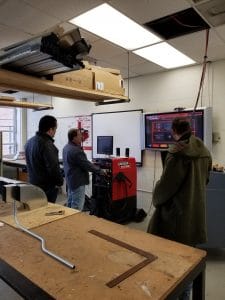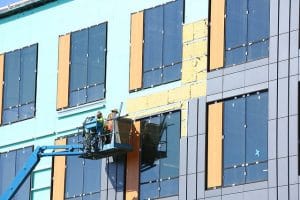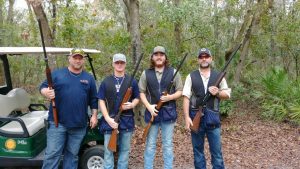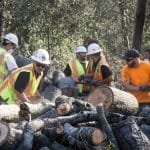
SMART has been active in this new rise in organizing with victories at major employers such as Micro Clean and new first contracts at BYD Electric Buses, Georgia Tank Cars among others.
According to James White, SMART Director of Organizing, “workers across America are understanding that in today’s economy, only a collectively bargained agreement provides the security and path forward towards realizing economic gain for their families.” White added that, “now is the time for local unions to capitalize on solidifying our bargaining power now, more than ever. We will do this by expanding our market share to increase opportunity for members, their families and workers across the broad range of industries we work in.”
Author: paul

According to Jealous, “College isn’t the only pathway to a successful future,” he added that if elected, he will “invest in apprenticeship programs to make sure that all our kids have every opportunity to succeed.”

Access for All is a nine-week, 270-hour training program that prepares participants for successful entry into construction apprenticeships and employment in the skilled trades. It covers workplace essential skills, such as safety, financial coaching, mentoring and teamwork; teaches basic construction skills, such as how to read a tape measure and blueprints; and provides a refresher on math and algebra skills. Students also work on a simulated construction site.
“Many Access for All participants come from poverty and several are homeless, so we have to start with the basics.” said Don O’Connell, administrator for Access for All.
In the past four years, more than 100 individuals have enrolled and 80 percent have completed the program. Of those, 91 percent are employed, 81 percent have industry-related employment, and 67 percent entered into apprenticeships.
SMART Local 80 has welcomed several Access for All graduates into the program.
“These students are very energetic and optimistic,” said Sam Velez, a sheet metal journeyman and architectural instructor at the training center. “Their training allows them to be quickly placed with contractors.”
Velez is enthusiastic about the program.
“Access for All is giving opportunities to candidates who want to work hard,” he said, “and it gives us the opportunities to employ good workers.”
In Virginia, one vote determined the balance of power in that state and what path leaders will take in the foreseeable future.
It’s never too early to update your voter registration status and make sure you are registered to vote. And SMART has made that easier for you by partnering with Rock the Vote to create our simple voter registration tool.
Remember, your vote counts!
Click Here: https://register.rockthevote.com/registrants/new?partner=36981

Click here to Join the SMART Army by filling out this online pledge form.
Apprentices from Tri-Counties Sheet Metal Workers JATC, along with labor and management representatives, spent the day helping a small community affected by the Thomas Fire.
Coordinator Brian Hill shared this about the community service project:
The fire cleanup work took place in a small, rural community near where the fire originated. The area lost six of its twelve homes. Primarily, we provided general community cleanup of downed trees to create better access for emergency vehicles, Southern California Edison electrical workers, and homeowners. We also worked on dirt roads that had collapsed where they crossed drainage. The plastic pipes melted, and the road collapsed. The community then built a temporary wooden support but that ended up burning a day or two later, so we made temporary repairs so they could access their water storage tanks.
On the same day, apprentices also volunteered at the Ventura Catholic Charities pantry nearby, distributing hygiene kits and meals to those in need.
As recently as last week, in Virginia, one vote determined the balance of power in that state’s legislature.
Remember that when the time comes to vote, especially in this year’s important midterm elections.
It’s never too early to update your voter registration status and make sure you are registered to vote.
SMART has partnered up with Rock the Vote to bring you a new easy to use voter registration tool.
You can’t really have a say in things if you don’t vote.
SMART Mechanical Department General Committee 2 General Chairman John McCloskey announced Jan. 8 that a tentative agreement with Amtrak has been reached. SMART-MD and coalition partners Transportation Communications Union, National Conference of Firemen and Oilers/SEIU, International Association of Machinists, International Brotherhood of Boiler Makers, International Brotherhood of Electrical Workers and the Transport Workers Union of America, which represents 57% of all Amtrak employees, reached this tentative agreement.
On Wednesday and Thursday, January 4th and 5th, the above-mentioned rail unions met in Washington, D.C., with Amtrak representatives and the coalition unanimously endorsing the tentative agreement. The tentative agreement will be rolled out to SMART-MD membership for ratification in the coming weeks. Upon ratification, the membership would receive an immediate 4.25% wage increase followed by an additional 2.75% on July 1, 2018. On July 1, 2019, membership shall receive another 3% increase followed by two further increases of 3.75% in July 2020 and 2021 for a compounded increase of 18.9%. Active employed members along with members who have subsequently retired or died are entitled to full retroactive pay.
If members ratify the tentative agreement, starting on Jan. 1, 2018, members’ Health and Welfare monthly premium would be frozen at $228 for the life of the contract that expires on December 31, 2021, with no retroactive H&W payments prior to January 2018.
General Chairman John McCloskey stated, “This agreement provides our members with real wage increases with full retroactive pay, and freezes the monthly Health and Welfare contributions for the entire term of the agreement. I want to thank my Local Chairmen and members for their support throughout this process.”

As a member of SMART, you have access to one of the leading member benefit programs in the nation. Sign up for or visit the Members’ Section at smart-union.org to tour some of the member benefits you can use.
From discounts on wireless phone service to exclusive rates on world-class amusement parks and entertainment options, your Union has you covered.
Keep the site bookmarked in the future as we continue to add to the value of your SMART Union membership with new member benefits and services.
The recent storms in the Texas, the Gulf Coast and Florida and fires in California affected many of our SMART Brothers and Sisters. We should not forget that the recovery is still underway, and it will continue for a long time to come.
While truly devastating, these combined events have also shown us at our Union best: members coming together, giving of themselves to help each other regardless of the challenge or the circumstances.
Just a week or two after the hurricanes struck, I had the opportunity to visit with members, local leaders and contractors in Houston and Beaumont, Texas, and in Florida.
Amid this terrible destruction, I was proud to witness, firsthand, the truly inspiring resilience of our affected members and their families and neighbors.
We saw the belongings, the neighborhoods, the entire life stories of countless families in ruins. In Texas, the cleanup had just barely begun, but debris was already piled high on sidewalks and driveways while wrecked automobiles filled the roads, waiting for removal. In Florida, many members and contractors were stranded without power, and some also lacked even basic supplies.
Emotion turns to action
The visible toll, especially on fellow SMART families—many facing a total loss—is something that would bring a surge of emotion to anyone who escaped unharmed.
And as Union members, how did people respond to that tide of emotion? It drove you—SMART members across the U.S. and Canada—into action.
Members of our Union, even some who were facing the adversity of storm damage that affected their own homes and lives, quickly traveled to the Houston area to help in many ways.
Some began by checking in on other members and on retired members who had settled in the ruined communities. Others purchased truckloads of supplies and drove hundreds and even thousands of miles to deliver the vital items—like water, bleach, diapers and even box fans, so vital to drying things out.
This outpouring of support has been overwhelming and makes a statement about the character of the men and women of OUR Union. In good times and bad, we stand up with each other and for each other.
That includes our funds, too. It’s been all-hands-on-deck with planning and assistance from the SMART Disaster Relief Fund, as well as SASMI, SMOHIT and NSSP efforts for their plan participants.
Our help for one another is not a one-time effort. As this issue was being finalized, our coordination and action plan is engaging for victims of other storms in Puerto Rico, Alabama, Louisiana, Mississippi as well as the devastating fires in the west.
As Union members, it’s what we do: we work for the common good.
Help for another challenge
That same character, that willingness to work not only to advance the cause of working families but all workers who might need assistance, is also at the heart of a new SMART recruitment program that I am proud to announce in this issue of The Members’ Journal.
We call it SMART Heroes because these men and women are members of the U.S. military nearing the end of their service—often without firm leads on civilian careers or jobs.
The program will provide training in the sheet metal industry to enlisted men and women of the U.S. Military prior to discharge.
SMART Heroes will complement the Helmets to Hardhats program, which connects veterans—people already out of uniform—with building trades apprenticeship programs.
Upon successfully completing the training before separating from service, a SMART Heroes graduate can have an opportunity of employment at any one of the 153 SMART apprenticeship programs in the United States with direct entry and advanced placement as a second-year apprentice. We have also spoken to Helmets to Hardhats Canada and other sectors of our union.
Win-Win-Win
This unique mechanism for supporting our military men and women transitioning to civilian life is also good business for signatory employers—and for our union.
Companies who employ Heroes get workers not only with skills, but with maturity—union professionals whose mettle has been well tested.
For SMART as well, we gain a solid stream for high-quality apprentices who will make our trade, our signatories and our union stronger by starting careers with both the skills and personal qualities that make them more likely to succeed long-term as workers and as members.
Our first class graduated in October (photo). The Special Focus section of the next Journal will focus on these men and women who are the first to complete this promising program.
Brothers and sisters, I thank you for the opportunity to be your General President. Whether supporting our military personnel or pitching in to assist Brothers and Sisters after terrible disasters, I am tremendously proud of our Union spirit, of our readiness to help each other and our communities. That is what we do.
Fraternally,
Joseph Sellers, Jr.
SMART General President

